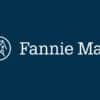Mortgage applications were on the rise in the latest from the Mortgage Bankers Association (MBA) covering the week ending Nov. 15. However, another MBA report pointed to the fifth consecutive monthly uptick in forbearance levels.
The Market Composite Index, the MBA’s measure of mortgage loan application volume, increased 1.7% percent on a seasonally adjusted basis from one week earlier. On an unadjusted basis, the index dipped by 1% compared with the previous week.
The seasonally adjusted Purchase Index increased 2% from one week earlier, but the unadjusted index was 3% lower compared with the previous week and was 1% lower than the same week one year ago. The Refinance Index increased 2% from the previous week and was 43% higher than the same week one year ago, while the refinance share of mortgage activity increased to 41.0% of total applications from 39.9% in the previous week.
Among the federal programs, the FHA share of total applications increased to 16.6% from 16.0% the week prior while the VA share of total applications increased to 13.6% from 13.3% and the USDA share of total applications decreased to 0.4% from 0.5%.
In another data report, the MBA determined that mortgage applications for new home purchases during October increased 8.2% year-over-year and were up 3% month-over-month. By product type, conventional loans composed 60.8% of loan applications while FHA loans accounted for 28.7%, VA loans had a 10.1% and RHS/USDA loans trailed with a 0.4% share. The average loan size for new homes increased from $402,658 in September to $409,942 in October.
Separately, the MBA’s latest Loan Monitoring Survey revealed that the total number of loans now in forbearance increased to 0.47% as of Oct. 31, with 235,000 homeowners are in forbearance plans. The share of Fannie Mae and Freddie Mac loans in forbearance increased 7 basis points to 0.20% in October while Ginnie Mae loans in forbearance increased by 30 basis points to 1.06%, and the forbearance share for portfolio loans and private-label securities increased 6 basis points to 0.43%.
“Approximately 65,000 more borrowers are in forbearance compared to one month ago,” said Marina Walsh, MBA’s vice president of industry analysis. “While forbearances are still low compared to the height of the pandemic, the monthly increase in forbearances is the largest since May 2020 and likely driven by the effects of Hurricanes Helene and Milton. Of those loans in forbearance, 45% are related to natural disasters while the remaining 55% are primarily related to temporary hardship such as job loss, death, divorce, or disability.”
Walsh added that October was “the fifth consecutive month in which the forbearance rate has increased, and the performance of overall servicing portfolios and loan workouts weakened compared to this time one year ago.”












